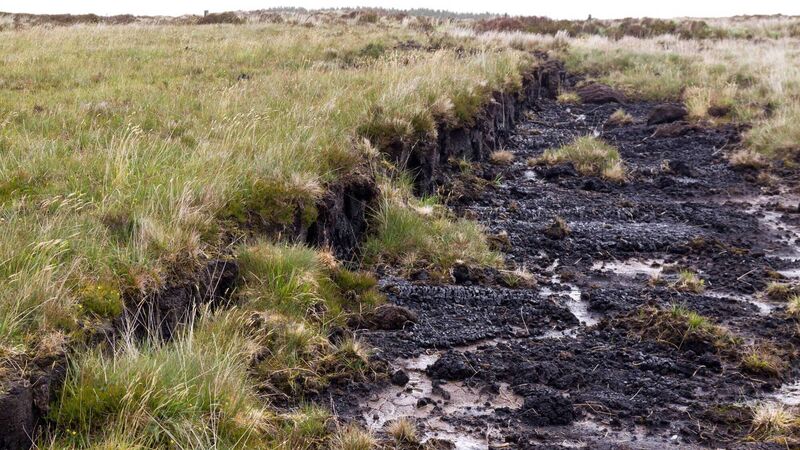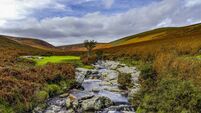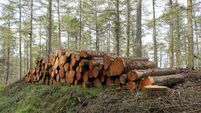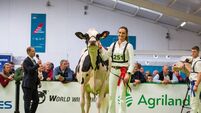Overall trend of deterioration means current status of bogs in Ireland is 'bad'

Restoration projects involve installing peat dams, peat bunds and overflow pipes on raised bog habitat to repair degraded peatland habitats by raising water levels. Picture: Getty Images
The Government is intending to adopt on a wider scale the approach of a results-based project that is focused on the conservation and management of bogs.
The LIFE IP Wild Atlantic Nature is a large-scale project aimed at conservation and management of Ireland’s Natura 2000 network, with a special focus on blanket bog.
The project, coordinated by the National Parks and Wildlife Service of the Department of Housing, Local Government and Heritage, covers more than 250,000 hectares of ecologically and socially important habitats, stretching along the west coast of Ireland from south Co Galway to north Co Donegal.
The project works with farmers, local communities, states agencies, and others across a broad range of actions spanning sectors including farming, forestry, tourism, community development, and scientific.
In response to a parliamentary question from Sinn Féin TD Pa Daly about whether the project can be extended to cover Co Kerry boglands, Minister of State Malcolm Noonan said that a key focus in the early stages of the project is the development of a payment scheme (RBPS) for farmers and landowners operating in blanket bog special areas of conservation nationally.
“The RBPS programme, developed in conjunction with project partners the Department of Agriculture, Food and the Marine, directly links payments to farmers with environmental quality, with better environmental quality attracting higher payments,” Mr Noonan said.
Meanwhile, Barry O’Loughlin, an ecologist specialising in peatland rehabilitation and restoration, told the that the status of bogs in Ireland at the moment “is bad”.
“The overall trend is they’re deteriorating,” he added.
The Shanakyle Bog Restoration and Habitat Enhancement Project is a locally-led European Innovation Partnership (EIP) scheme project led by Mr O’Loughlin and landowner Catherine Ní Ciardha of the Shanakyle Bog Restoration Group.
This locally-led EIP is the first raised bog restoration and rewetting project to be undertaken in Co Clare.
In early 2021, Ms Ní Ciardha approached Mr O’Loughlin about wanting to do something with her land to benefit biodiversity.
Mr O’Loughlin suggested restoring and rewetting the bog, “which had largely dried out as a result of historical pressures associated with domestic turf cutting and drainage”.
What followed was the formation of the Shanakyle Bog Restoration Group in early 2021, and a subsequent application for funding in response to an open call for farm and community biodiversity initiatives by the Department of Agriculture’s locally-led EIP scheme.
In May 2021, the Shanakyle Bog Restoration Group was awarded funding in the amount of €55,000 to complete peatland restoration and biodiversity enhancement measures.
The project involved installing peat dams, peat bunds, and overflow pipes on 30 acres of raised bog habitat to repair degraded peatland habitats by raising water levels to create optimal conditions for the growth of sphagnum mosses, the main peat forming agent of active raised bogs.
“The result of this work will conserve rare peatland habitats for biodiversity and create favourable baseline conditions for carbon sequestration to combat climate change,” according to the project synopsis.
“Other additional biodiversity and enhancement measures will include managing 16 acres of adjoining grassland for wildflower meadow creation for pollinators [no application of fertiliser and pesticides, bracken control, applying a low grazing stocking regime] such as bees, butterflies and moths.”
Measures also included the creation of a wildlife pond in grassland pasture, removal of problematic invasive species including rhododendron, Himalayan balsam and giant hogweed, and installation of bat boxes and bird boxes, and creation of a nature trail.
Mr O’Loughlin said he hopes that other landowners, farmers, and communities across the country will choose to undertake similar projects.
However, for this to happen, there must also be support systems and funding streams to enable it.
Mr O’Loughlin and his project colleagues acknowledge that the majority of financial payments available to farmers to rewet peatlands and other wetland habitats come from participation in EIP schemes — and while this is beneficial, it only “represents a small number of farmers within discrete geographical locations compared to the rest of the country”.
Mr O’Loughlin is hoping there will be more opportunities for financial incentives under the new CAP in 2023.
“It’s a win for climate, it’s a win for biodiversity, it’s a win for water quality, and this is where we could see farmers getting carbon credits but at the same time, get a payment for this work as well,” Mr O’Loughlin added.
“Farmers are interested in what goes on in their land, I’ve got farmers contacting me asking about this, and asking where they can get a payment because they’ve got that idle ground there.
“But it's not just to do the work and walk away. I think farmers have a huge integrated role to play in this because they know where the drains are, they have a huge role to play in planning as well.
“Where there’s wetlands and peatlands and the conservation status is in decline, that’s a good way to target the biodiversity and climate crisis and give farmers a payment at the same time.”












